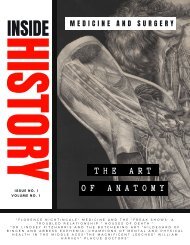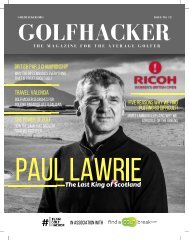Inside History: Protest. Revolt & Reform
For our next issue we take a closer look at the theme of Protest from the events of Peterloo to the fall of the Berlin. Inside we cover a whole range of historical protests and the individuals who led the charge for change. This issues includes: John Brown's raid on Harpers Ferry, The Suffragettes, Billie Holiday and the role music has played in protests, The Civil Rights Movement, Protest and Sport, We are the People: The Fall of the Berlin Wall, Bloody Sunday at Trafalgar Square, and much much more.
For our next issue we take a closer look at the theme of Protest from the events of Peterloo to the fall of the Berlin. Inside we cover a whole range of historical protests and the individuals who led the charge for change. This issues includes:
John Brown's raid on Harpers Ferry, The Suffragettes, Billie Holiday and the role music has played in protests, The Civil Rights Movement, Protest and Sport, We are the People: The Fall of the Berlin Wall, Bloody Sunday at Trafalgar Square, and much much more.
- No tags were found...
Create successful ePaper yourself
Turn your PDF publications into a flip-book with our unique Google optimized e-Paper software.
Meeting of Women's Social
& Political Union (WSPU)
leaders, c.1906 - c.1907
Flora Drummond,
Christabel Pankhurst,
Annie Kenny, Emmeline
Pankhurst, Charlotte
Despard with two others,
working round a kitchen
table. (PICRYL)
one of us who would not have gone to our death at that
moment, had Christabel so willed it.” The event soon became
known as ‘Black Friday,’ because the WSPU were met with
police brutality, facing violent beatings and sexual assault.
The events of ‘Black Friday’ provoked the WSPU’s sudden
escalating use of militancy. From 1912 to 1914, new violent
tactics were implemented, such as vandalism, arson and
bombings. The suffragettes would smash up windows of
banks and post offices, cut telephone wires and even
attacked paintings in art galleries. Attempts were made to
burn down the houses of two members of the government
who opposed the suffrage movement. Despite this, both
Christabel and Emmeline emphasised that there should not
be any danger to human life. Nonetheless, this seems
contradictory as the extremities of the vandalism and
violence definitely posed a great risk to the safety of both
members of the public and the suffragettes.
Christabel did not participate in these more extreme
protests because in 1912, she moved to Paris to avoid being
imprisoned, and therefore directed the militancy from the
sidelines. During her time in Paris, Christabel founded and
edited The Suffragette newspaper. The Daily Mail had first
created the nickname ‘suffragette’ in 1906 in an article
mocking the militant group of suffragettes. However,
Christabel only used this to her advantage, deciding to adopt
the term for her newspaper in which she encouraged the use
of militant tactics, documenting the many acts of arson and
vandalism. Other newspapers began to report weekly on the
attacks, expressing outrage and disapproval. By starting her
own newspaper, Christabel showed her strong ability as a
resilient leader to portray the WSPU and its aims in her own
words to members of the public.
Although members of the WSPU supported Christabel in her
militant approach to protest, she also faced criticism. For
instance, WSPU member Emmeline Pethick-Lawrence spoke
out against the violent campaigns, believing that they would
undermine the aims of the suffragettes and reduce
support. Christabel was not slow to take action and
arranged for Emmeline to be removed from the group.
Furthermore, Christabel’s extreme campaigns even
created a divide within her own family. The increasing
use of vandalism evoked conflict between Christabel
and her sister, Sylvia. Sylvia also disagreed with
Christabel’s decision to distance the WSPU from leftist
politics and instead, attract upper and middle class
women to the group. Christabel believed the cause
should be dedicated to women’s suffrage, and that
other issues concerning working-class women would
be solved once women were granted the vote. Sylvia
was consequently expelled from the WSPU in 1914 for
enforcing the idea that working-class women should
be involved in the movement, before setting up the
East London Federation of the Suffragettes (ELFS)
group. Christabel’s controversial views towards
working-class women made members of the group
question if the WSPU was really fighting on behalf of all
women, or rather the privileged few.
With the outbreak of World War One in 1914, the
WSPU halted all militant activity after the government
agreed to release the suffragettes from prison. The
WSPU’s focus changed to supporting the war effort,
with Christabel even changing the name of her
newspaper to the patriotic Britannia. As time went on,
the WSPU faded from public attention and was
dissolved in 1917. A year later, the Representation of
the People Bill was passed, allowing women over the
28 INSIDE HISTORY

















